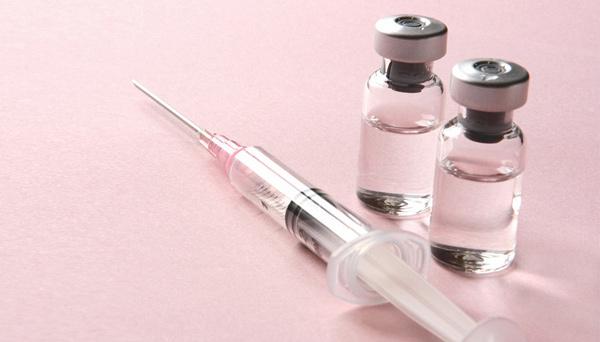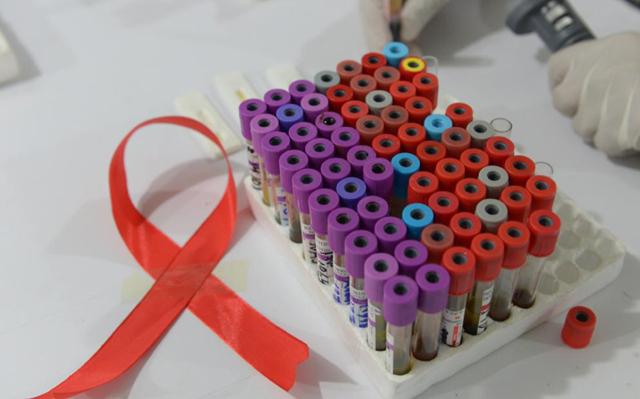You are here
Spate of clinical trials has scientists hopeful about a vaccine to prevent HIV
By Los Angeles Times (TNS) - Sep 24,2019 - Last updated at Sep 24,2019

Photo courtesy of healthline.com
By Emily Baumgaertner
First there were the drugs that could knock back HIV to undetectable levels, and the virus was no longer synonymous with a death sentence. Then came a treatment that allowed people who were HIV-negative to remain that way, even if their partners weren’t.
But to truly defeat the virus that causes AIDS, doctors need a vaccine. And after decades of dead ends and dashed hopes, they may finally be on the verge of having one.
With a large-scale clinical trial launching this fall and several others already underway, scientists say they are cautiously optimistic that they’ll soon have a way to fight HIV long before a person is ever exposed.
“When you have a disease that is transmitted without symptoms, you’re going to acquire it when you least expect it,” said Dr Larry Corey, principal investigator of the HIV Vaccine Trials Network. In such situations, “the only base control measure ever proven to be effective is a vaccine”.
Researchers and public health experts agree that the surest way to eliminate a disease for good is by deploying a vaccine. It worked for smallpox. It worked for polio. And, if combined with antiretroviral therapy and preexposure prophylaxis, it could work for HIV too.
A vaccine would mean “the end of the AIDS story as we know it,” said Dr Robert C. Gallo, director of the Institute of Human Virology at the University of Maryland School of Medicine.
More than 37 million people around the world are living with HIV, and they spread it to about 5,000 others every day, Corey said. There are also about 180,000 transmissions to newborns each year.
“This virus is unfortunately doing very well,” he said.
The human immunodeficiency virus, or HIV, attacks a specific type of white blood cell the body relies on to fight off infections. If left untreated for several years, a patient’s white blood cell count becomes critically low, leading to acquired immunodeficiency syndrome, or AIDS. That makes the body vulnerable to bacteria and fungi that can cause tuberculosis, meningitis, certain types of cancer and other serious diseases that can lead to death.
Once Gallo and other scientists identified HIV as the cause of AIDS in 1984, it didn’t take long for them to recognise the need for a way to inoculate people against the virus. Even back then, he said, “We were already planning for a vaccine.”
Vaccines prime the immune system for a dangerous invader by introducing a dead or weakened version of it. That way, if the real threat comes along later, the body is already equipped to recognise it and beat it back.
With classic threats such as measles or polio, the vast majority of people are already able to suppress the virus and eradicate it from their bodies. In those cases, developing a vaccine is as simple as finding a safe way to mimic a natural infection — perhaps by introducing a modified version that has been stripped of its weaponry.
But HIV is different, because no patient has ever been known to overcome the virus on his or her own.
That means scientists working on a vaccine don’t have a natural cheat sheet at their disposal.
“If we want to make a durable vaccine, we have to be even more clever than the natural infection. We’ve never had that challenge with any other virus,” said Dr Anthony S. Fauci, director of the National Institute of Allergy and Infectious Diseases. “I don’t think it’s going to be impossible. But we need to understand the relationship between the pathogen and the immune system in a way we’ve never had to before.”
HIV is a wily opponent. The virus doesn’t just defend itself against attacking immune cells, it invades them, integrating itself into the victim’s DNA. It can also envelop itself in sugar molecules to keep antibodies from latching onto its shell.
Then there are genetic complications. HIV has more genetic diversity than any other known virus. It makes frequent mistakes as it replicates, and it can survive without correcting them. This ability to rapidly mutate makes it a moving target — no match for a vaccine designed to protect against a single strain.
On top of that, there are different HIV subtypes in different parts of the world. (Subtype B is common in North America and Europe, for example, while subtype C is found in southern and eastern Africa.) An effective vaccine must be based on components drawn from a mosaic of HIV variants in order to work against many strains.
“You have to protect against all that variability,” said Dr Susan Buchbinder, director of HIV Bridge, a prevention research unit in the San Francisco Department of Public Health.
That strategy will be tested this fall in a large-scale efficacy trial called Mosaico. The experimental vaccine, made by Johnson & Johnson, contains an array of genetic sequences from various HIV strains.
In preclinical trials, the vaccine effectively protected about 66 per cent of non-human primates against HIV-like viruses. Follow-up studies in people helped finalise its makeup.
Now scientists plan to enrol some 3,800 healthy participants at more than 50 trial sites across North and South America and Europe. All of them will be drawn from groups that are at high risk of contracting HIV, including men who have sex with men and transgender people. They will receive four vaccinations over the course of a year.
The study will be double-blind, meaning that neither the participants nor the researchers will know who has been randomly selected to receive the experimental vaccine and who is getting a placebo. If the vaccine proves successful, researchers hope it will be used around the world.
“We’re really excited about this one,” said Buchbinder, the protocol chair for the Mosaico trial.
Focusing on high-risk populations is paramount, researchers say. Men who have sex with men constitute almost two-thirds of new HIV infections in the United States. And the world’s approximately 25 million transgender people are almost 50 times more likely to be living with HIV than the general population.
As part of the study enrolment process, the researchers will educate volunteers on the benefits of preexposure prophylaxis (PrEP) and urge them to take that drug in lieu of joining the study. Only those who say they still want to forgo the treatment will be able to participate.
No vaccine is foolproof, and scientists say they don’t have to be. Researchers with the International AIDS Vaccine Initiative determined that a vaccine that’s 70 per cent effective would do more to prevent new infections than PrEP.
The Mosaico trial is pushing for 65 per cent effectiveness, Buchbinder said. “Even a more modestly effective vaccine could alter the course of the epidemic,” she said.
Many other vaccine candidates are in the pipeline. Gallo and his colleagues are working on their own HIV vaccine that they expect will enter a Phase II trial to test its efficacy in the near future.
“We’ve clearly had our ups and downs, but science is all about testing our hypotheses, even if the outcome is, ‘Nope, definitely not working,’” Buchbinder said. “The only failed experiment is one in which you don’t find an answer.”
Related Articles
VANCOUVER — Despite evidence that taking powerful anti-HIV drugs can help protect uninfected partners from contracting the virus that
Researchers said Wednesday a lab-manufactured antibody “significantly” reduced HIV blood levels in a small but promising human trial, and caused no harmful side effects.
PARIS — AIDS researchers announced on Wednesday that a fourth person has been “cured” of HIV, but the dangerous procedure for patients also















